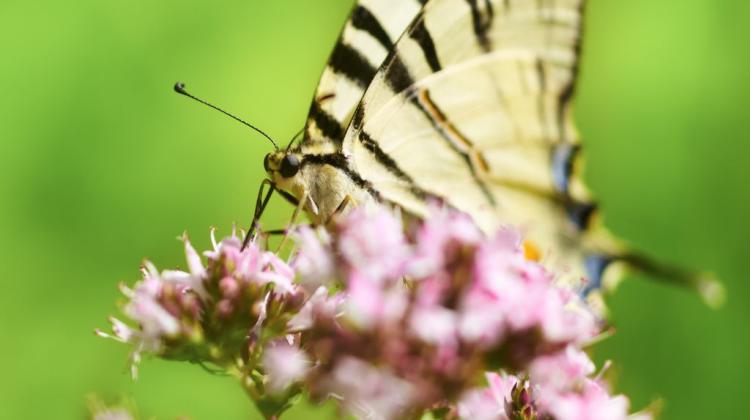Endangered species of butterflies found refuge in the Masurian butterfly conservatory

Endangered species of butterflies found refuge in the butterfly conservatory in Marcinkowo near Mrągowo (Warmia and Mazury). Children and young people can play there and learn about the life of beautiful insects. Butterflies are threatened by large-scale farming and plant protection chemicals.
In Poland, most of the butterfly conservatories are in zoos. The one in Mazury has been built by Magda Markiewicz, who runs demonstration gardens for tourists and students of green schools.
In the butterfly conservatory you can conduct classes and workshops for children, during which the youngest learn about the world of butterflies: development cycles and favourite host plants - emphasised Markiewicz.
Butterflies come to the conservatory near Mrągowo from the nearby meadows and gardens. Next to the butterfly conservatory is a wild meadow, on which the butterflies feed and lay eggs. Hatched caterpillars are moved to the asylum.
Caterpillars eat common plants such as knotweed, sorrel, hazel and nettle leaves. They also love vegetables, such as cabbage and parsley. Butterflies prefer nectariferous plants, like summer lilac, bee balm and echinacea.
As said Markiewicz, butterflies are easiest to see in a sunny weather, when there is no wind.
The butterfly conservatory has the shape of a huge octagon, covered with net to prevent insects from flying out. Houses for butterflies have elongated inlets to protect the insects against threats, such as cats or birds. They have intense colours: purple, pink or purple, because those colours attract butterflies.
The butterfly conservatory was built with the support of my family. Efforts to obtain financing from other sources failed" - emphasised Markiewicz.
According to experts, butterflies are threatened by large-scale farming and the use of chemical pesticides.
Naturalist and insect specialist Prof. Stanisław Czachorowski of the University of Warmia and Mazury in Olsztyn told PAP that for pollinating insects, which include bees and butterflies, it is hard to live in the present natural environment.
"In the cities there are no flowery lawns with weeds, and that’s where butterflies feed. There are no wild, non-mowed meadows. Once the grass grows back, mowers immediately show up and cut the grass and daisies. Building habitats for insects, hotels for bees and garden ponds for dragonflies, as well as houses for butterflies, is a good idea "- emphasised Prof. Czachorowski.
In Mazury, you can see the butterfly species such as the Spurge Hawk-moth, Large Emerald, Small Heath, Large Copper, Silver-washed Fritillary, as well as those more commonly known like Swallowtail or Red Admiral.
PAP - Science and Scholarship in Poland
ali/ amac/
tr. RL
Przed dodaniem komentarza prosimy o zapoznanie z Regulaminem forum serwisu Nauka w Polsce.















